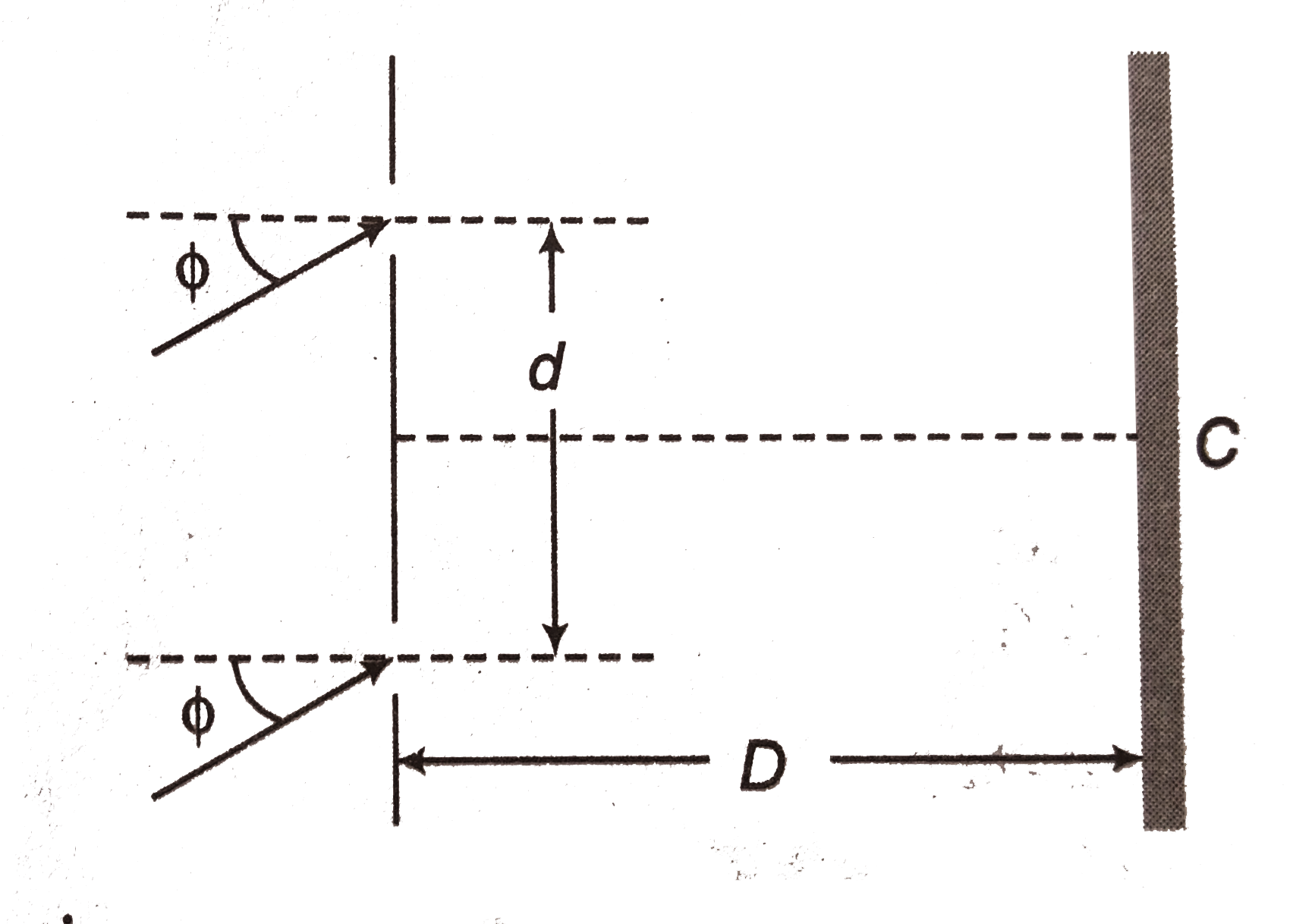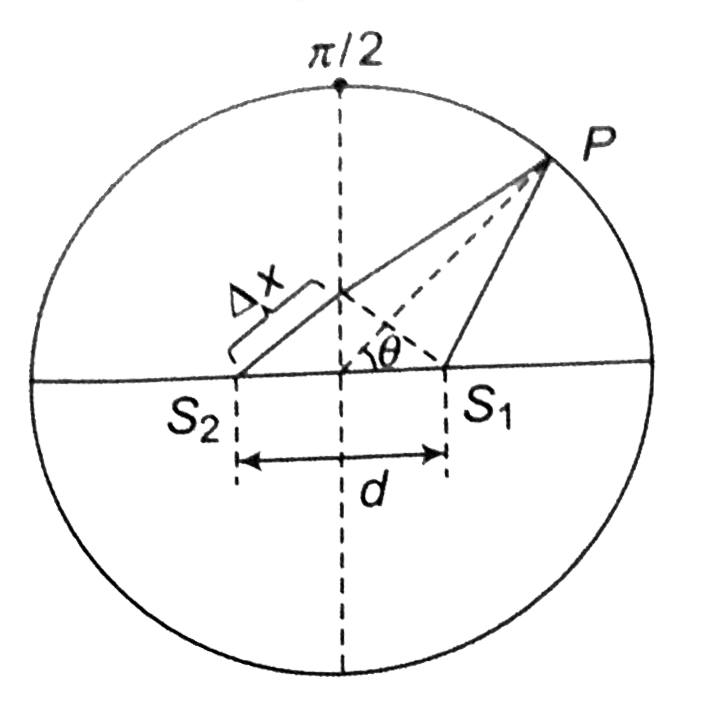Two coherent radio point sources that are separated by 2.0 m are radiating in phase with a wavelength of 0.25m. If a detector moves in a large circle around their mid-point. At how many points will the detector show a maximum signal?
10
16
8
32
The correct Answer is:D
Step by step video solution for Two coherent radio point sources that are separated by 2.0 m are radiating in phase with a wavelength of 0.25m. If a detector moves in a large circle around their mid-point. At how many points will the detector show a maximum signal? by Physics experts to help you in doubts & scoring excellent marks in Class 12 exams.
Updated on:21/07/2023Topper's Solved these Questions
- WAVE OPTICSBook:AAKASH SERIESChapter:WAVE OPTICSExercise:LECTURE SHEET (EXERCISE - I) (INTERFERENCE & YDSE) Level - II (ADVANCED) More than one correct answer type questions
Explore 4 Videos
- WAVE OPTICSBook:AAKASH SERIESChapter:WAVE OPTICSExercise:LECTURE SHEET (EXERCISE - I) (INTERFERENCE & YDSE) Level - II (ADVANCED) Linked Comprehension type questions
Explore 6 Videos
- WAVE OPTICSBook:AAKASH SERIESChapter:WAVE OPTICSExercise:PROBLEMS (LEVEL - II)
Explore 33 Videos
- WAVE MOTION AND SOUNDBook:AAKASH SERIESChapter:WAVE MOTION AND SOUNDExercise:PROBLEMS (LEVEL - II)
Explore 97 Videos
- WAVESBook:AAKASH SERIESChapter:WAVESExercise:EXERCISE-III (Doppler effect :)
Explore 15 Videos
Similar Questions
If the source of light used in a Young's Double Slit experiment is changed from red to blue, then
View SolutionLight of wavelengthλ=500nm falls on two narrow slits placed a distance d = 50×10−4 cm
apart, at an angle ϕ=30∘ relative to the slits as shown in figure. On the lower slit a transparent slab of thickness 0.1 mm and refractive index 32 is placed. The interference pattern is observed at a distance D=2m from the slits. Then, calculate

(a) position of the central maxima.
(b) the order of maxima at point C of screen .
(c)how many fringes will pass C, if we remove the transparent slab from the lower slit?
View SolutionIn Young's double-slit experiment, the y-coordinate of central maxima and 10th maxima are 2 cm and 5 cm, respectively, When the YDSE apparatus is immersed in a liquid of refractive index 1.5, the corresponding y-coordinates will be
View SolutionA wave is described by the equation y=(1.0mm)sinπ(x2.0cm−t0.01s).
(a) Find time period and wavelength.
(b) Find the speed of particle at x=1.0cm and time t=0.01s.
( c ) What are the speed of the partcle at x=3.0cm, 5.0cmand7.0cm at t=0.01s?
(d) What are the speeds of the partcle at x=1.0cm at t=0.011 , 0.012and0.013s?
View SolutionWhen a train is approaching the stationary observer, the apparent frequency of the whistle observed as 100 Hz, while when it has passed away from the observer with same speed, it is 50 Hz. Calculate the frequency of the whistle when the observer moves with the train V = 330 m/s)
View SolutionTwo coherent radio point sources that are separated by 2.0 m are radiating in phase with a wavelength of 0.25m. If a detector moves in a large circle around their mid-point. At how many points will the detector show a maximum signal?
View SolutionTwo point sources separated by 2.0 m are radiating in phase with lambda = 0.50 m . A detector moves in a circular path around the two sources in a plane containing them. How many maxima are detected?
View SolutionTwo coherent sources emit light of wavelength lambda . Separation between them, d = 4 lambda . If a detector moves along the y-axis, what is the maximum number of minima observed? If the detector moves along 'x-axis beginning from S_(2) , the maximum number of minima observed is
View SolutionTwo coherent sources separated by distance d are radiating in phase having wavelength lambda . A detector moves in a big circle around the two sources in the plane of the two sources. The angular position of n=4 interference maxima is given as
View SolutionTwo coherent sources S_1 and S_2 area separated by a distance four times the wavelength lambda of the source. The sources lie along y axis whereas a detector moves along +x axis. Leaving the origin and far off points the number of points where maxima are observed is
View SolutionTwo coherent radio-frequency point sources separated by 2.0m are radiating in phase with λ=0.50m. A detector moves in a circuit of large radius around the two sources in a plane containing them as shown in figure. Find (a) the angular position of interference maxima for 0≤θ≤90∘ and (b) number of maximum in the range (−π2)≤θ≤π2 and in one complete rotation.

View SolutionTwo radio frequency sources S_(1) and S_(2) , separated by distance 2.5 m emitting in phase waves of wavelength 1m. A detector moves in a large circular path around the two sources in a plane containing them. The number of maxima that will be detected by it over the complete circular path. are
View SolutionTwo identical loudspeakers are located at point A & B, 2 m apart. The loudspeakers are driven by the same amplifier (coherent and are in phase). A small detector is moved out from point B along a line frequency below which there will be no position
View SolutionAn interference is observed due to two coherent sources separated by a distance 5lambda along Y-axis, where lambda is the wavelength of light A detector D is moved along the positive X -axis The number of point on the X-axis excluding the points x=0 and x=infty at which resultant intensity will be maximum are
View Solution
In Figure, two radio- frequency point sources S1 and S2 separated by distance d = 1.8 m, are radiating in phase with λ=0.50m. A detector moves in a large circular path around the two sources in a plane contain- ing them. How many (a) maxima and (b) minima does it detect?
View SolutionFigure shows two isotropic point sources of sound, S1 and S2 The sources emit waves in phase at wavelength 0.50 m, they are separated by D = 2.20 m. If we move a sound detector along a large circle centered at the midpoint between the sources, at how many points do waves arrive at the detector (a) exactly in phase and (b) exactly out of phase?

View Solution
